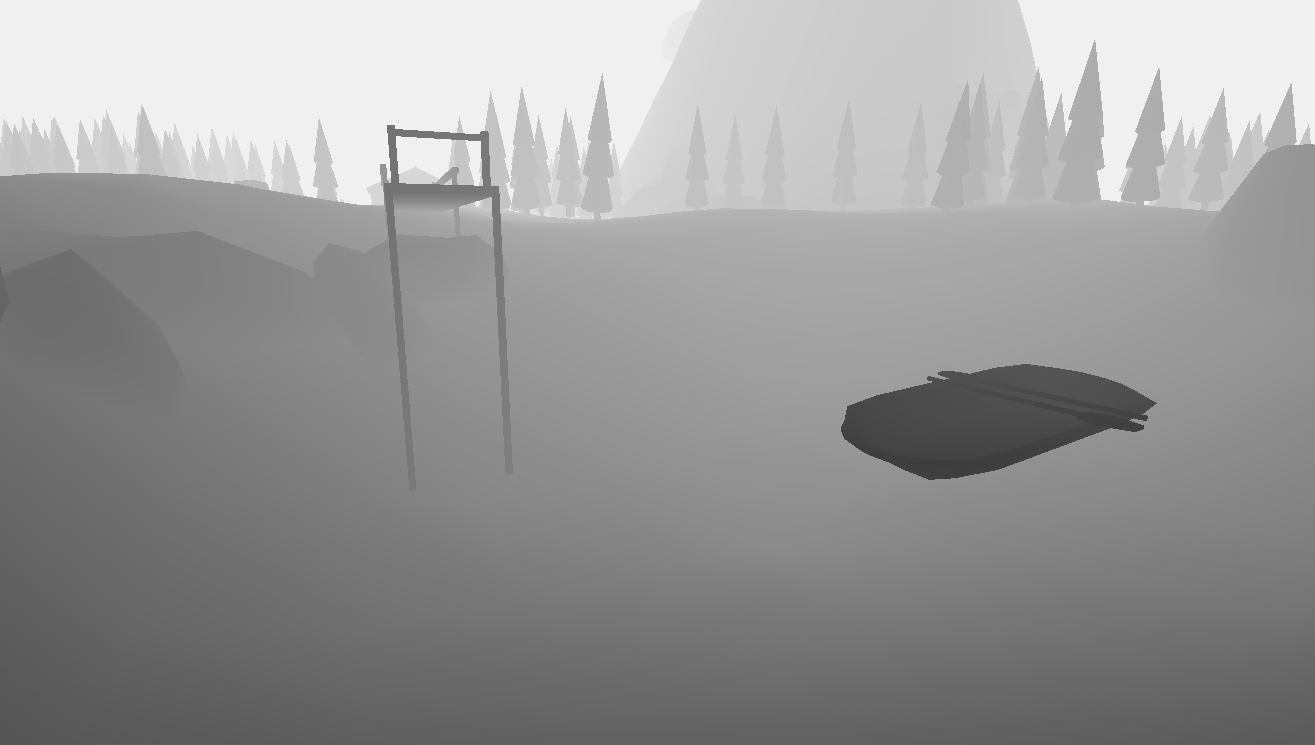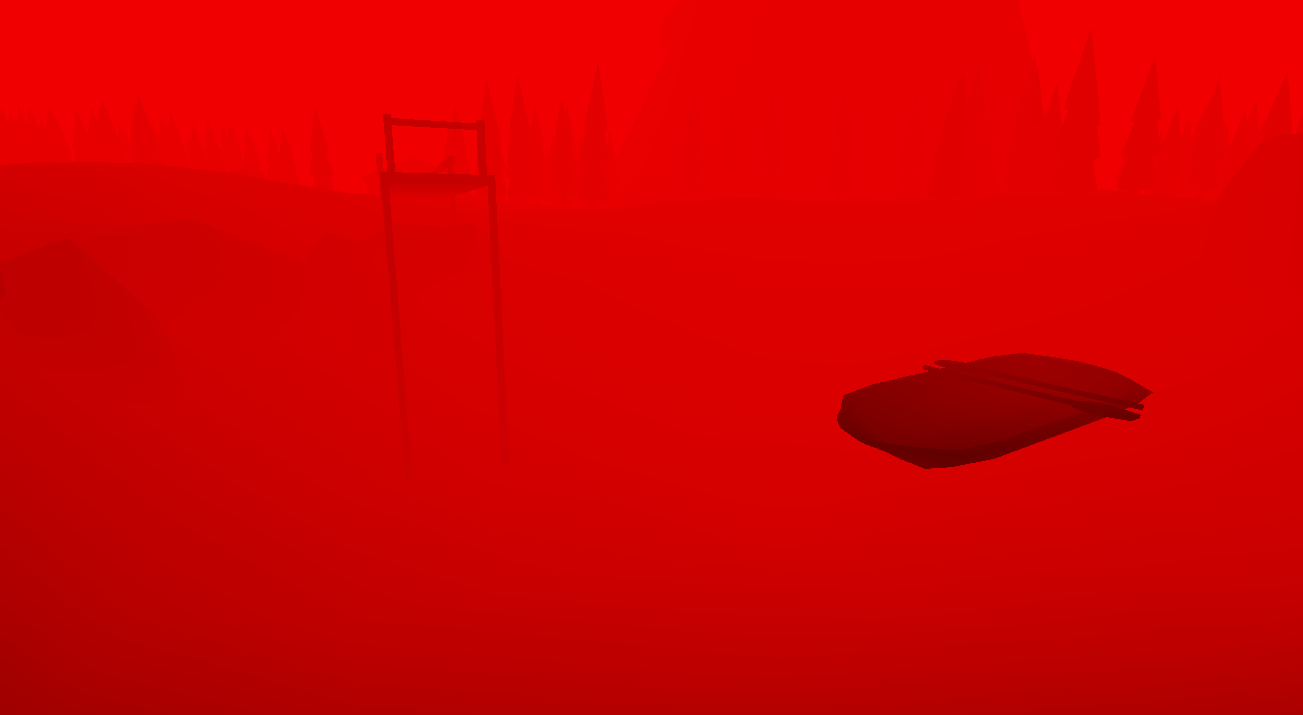How do I lookup the depth texture?

Here’s a short tutorial on reading the DEPTH_TEXTURE in Godot! I remember this being one of the most confusing things to understand when beginning to write shaders, so, I decided to make a small written breakdown here.
The depth buffer contains a bunch of floating-point values that hold the depth of every single pixel in the scene. These values are stored on the GPU’s memory in a texture, called the ‘depth texture’.
Godot already provides this to us natively in all spatial shaders. Which means we cannot sample the depth texture in canvas_item or particles shader types.
Sampling the Depth Texture
The depth texture holds the (transformed) depth values for the scene. These are all floating-point values, so only a single channel of the depth texture is actually filled with data. This channel is the first channel (the red channel) of the depth texture.
In the fragment() function, we sample it as follows:
float depth = texture(DEPTH_TEXTURE, SCREEN_UV).r;
Notice the .r that allows us to take just the red channel of the depth texture. Also, we use SCREEN_UV because this has the same UVs as the SCREEN_TEXTURE.
This depth value is totally unusable for most situations however, because this isn’t the linear depth of the scene. Instead, its currently on a logarithmic scale, and we need to transform first.
 Raw depth texture value when we read it
Raw depth texture value when we read it
 Raising the power of this depth to 50 shows some details
Raising the power of this depth to 50 shows some details pow(depth, 50.0)
This occurs because the vertices of the mesh are transformed into clip-space using the PROJECTION_MATRIX which makes the “z” value non-linear. Of course, to counteract this, we need to just multiply it by the INV_PROJECTION_MATRIX so we can head back into view-space.
If you’re new to shaders, take a look at the different vertex transformation stages below:
 Figure 1. Vertex Transformation Stages (Vries, 2014).
Figure 1. Vertex Transformation Stages (Vries, 2014).
We currently have a clip-space value for the depth texture, so we want to get back to view space by undoing the projection transformation.
Right now, the depth value that we have is between 0 and 1, but completely non-linear. Also, don’t forget that we’re working in clip-space, so we have to construct NDC (normalized device coordinates) that runs from -1 to 1:
Note for Godot 4 users: Clip-space normalized device coordinates (NDC) used to run from $[-1,1]$ on all axes in OpenGL (Vries, 2014), however, Vulkan handles NDCs a little differently.
The $x$ and $y$ axes still run from $[-1, 1]$ but the $z$ axis runs from $[0,1]$ (Wellings, 2016).
vec3 screen_coords = vec3(SCREEN_UV, depth) // Still between 0 and 1;
vec3 ndc = screen_coords * 2.0 - 1.0 // Now between -1 and 1;
The vec3(SCREEN_UV, depth) is some GLSL syntax sugar that is equivalent to vec3(SCREEN_UV.x, SCREEN_UV.y, depth)
Now, let’s make this linear again by transforming them:
vec4 view_space = INV_PROJECTION_MATRIX * vec4(ndc, 1.0);
view_space.xyz /= view.w;
depth = -view.z;
Behold! You now have the linear value of scene’s depth! Here’s the full code if you want to come back later and just copy it:
float depth = texture(DEPTH_TEXTURE, SCREEN_UV).r;
vec3 screen_coords = vec3(SCREEN_UV, depth);
vec3 ndc = screen_coords * 2.0 - 1.0;
vec4 view_space = INV_PROJECTION_MATRIX * vec4(ndc, 1.0);
view_space.xyz /= view.w;
depth = -view.z;
References
Wellings, M. (2016, March 20). The New Vulkan Coordinate System. Retrieved September 10, 2022, from https://matthewwellings.com/blog/the-new-vulkan-coordinate-system/
Vries, J. D. (2014, June). Coordinate Systems. LearnOpenGL. Retrieved August 23, 2022, from https://learnopengl.com/Getting-started/Coordinate-Systems